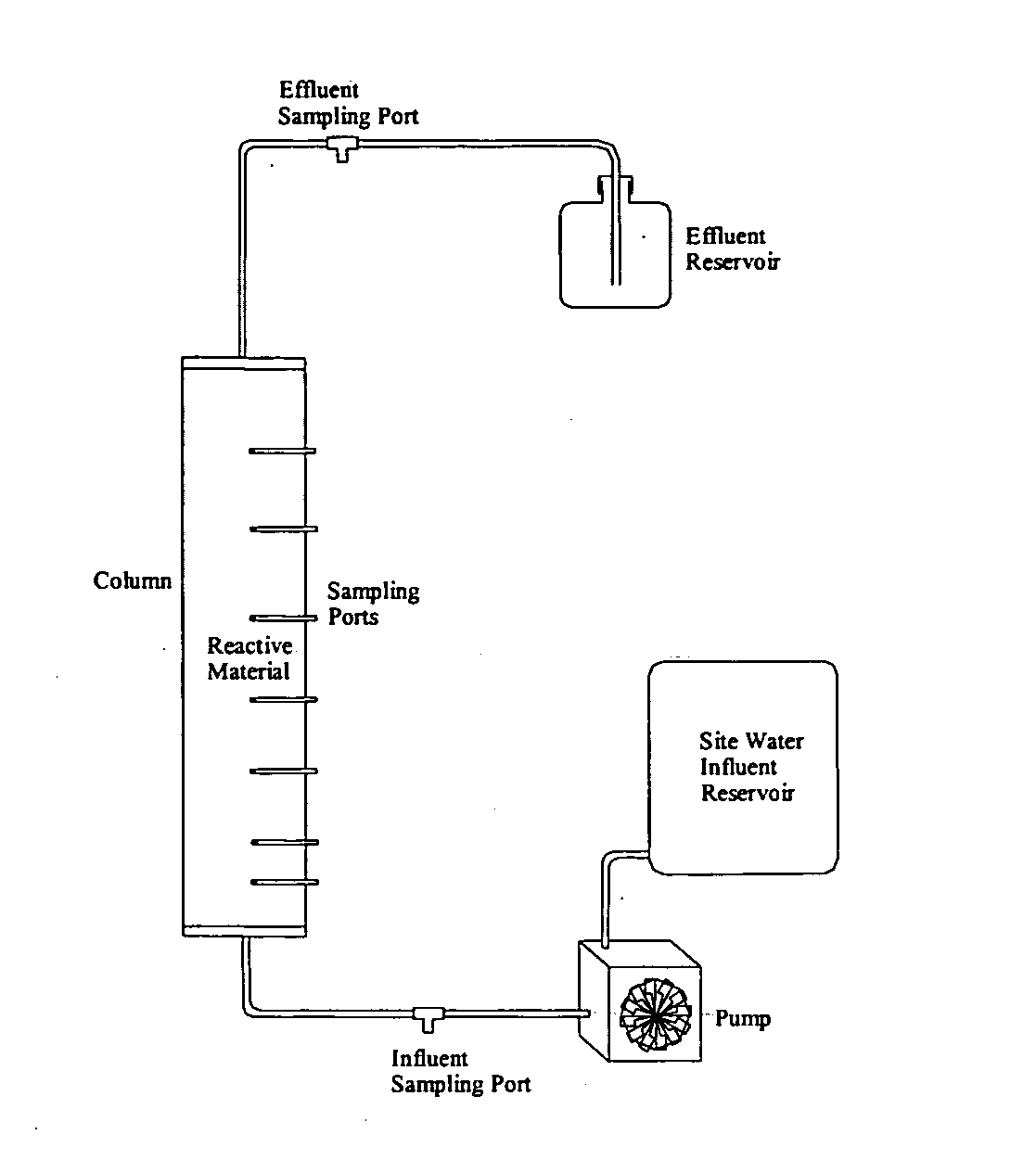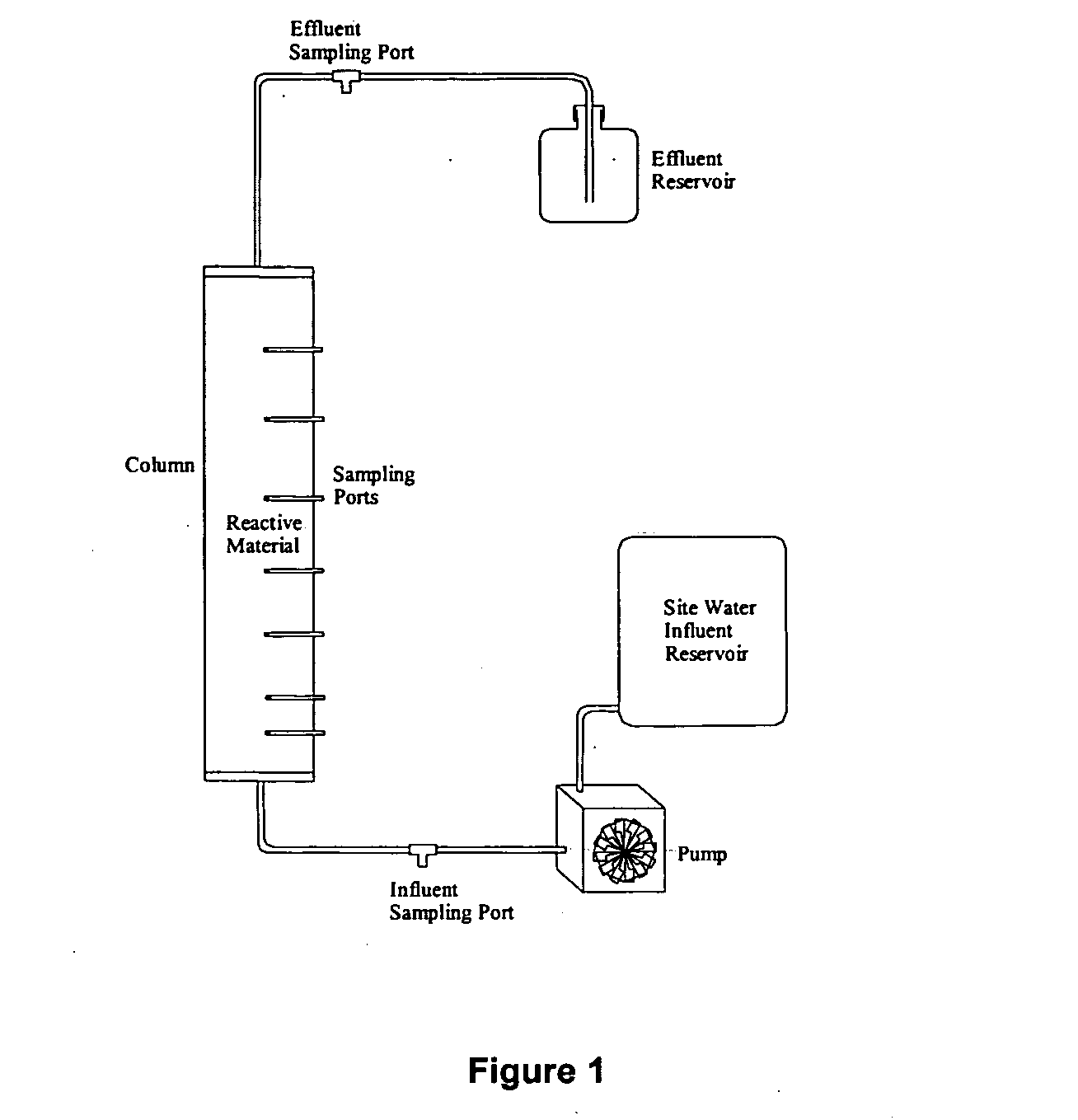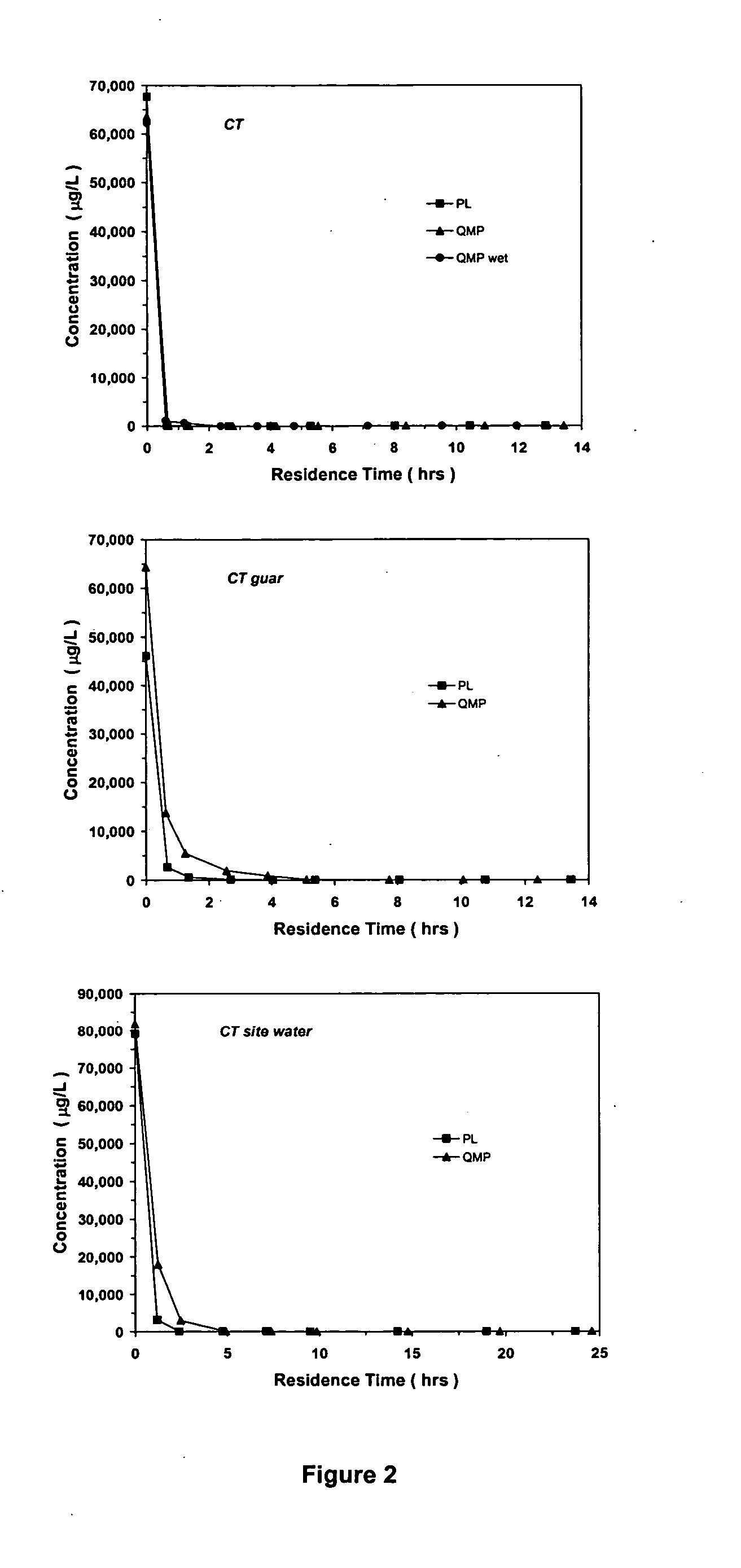Process for treating water using atomized ferrous powders containing 0.25 to 4 wt% carbon and 1 to 6 wt% oxygen
a technology of atomized ferrous powder and water treatment, which is applied in the direction of water/sludge/sewage treatment, contaminated soil reclamation, chemical apparatus and processes, etc., can solve the problems of reducing the effectiveness of contaminated activated carbon, partially or completely reducing the contaminant in the activated carbon, and being able to achieve the effect of reducing the contaminant content of the activated carbon
- Summary
- Abstract
- Description
- Claims
- Application Information
AI Technical Summary
Problems solved by technology
Method used
Image
Examples
working examples
[0066] Column tests were conducted using Quebec Metal Powders H2Omet™ 57 iron and commercial U.S. iron source (PL) to evaluate their ability to degrade chlorinated volatile organic compounds (VOCs).
Material and Methods
[0067] H2Omet™ 57 is a granular iron atomized (granulated) and dried as described in the previous section. The size distribution and the typical chemistry of that powder is given in Table 2. The commercial iron sources used in that study comprises a mixture of ductile and cast iron cuttings and borings that are obtained from a number of primary industries that use iron in the production of automotive and related industrial parts. To create the end product to be used in PRB applications, a number of these “feed stocks” are mixed together, put through a rotary kiln at several hundred degrees Fahrenheit in proprietary gas mixtures, cooled by a variety of methods, milled and sorted to a specific grain size range.
[0068] The columns were constructed of Plexiglas™ with a ...
example 1
[0074] The test objective was to evaluate a shift in CT reaction chemistry previously observed with dry-packed H2Omet™ 57. The column was packed with H2Omet™ 57 material that was soaked in water for 2 weeks. The column set up and the influent water composition were similar to those used in prior tests with the H2Omet™ 57 material (Table 4). The column influent solution was prepared using laboratory grade chemicals to achieve influent concentrations of about 60 mg / L CT, 50 mg / L for CFC-11 and 10 mg / L CFC-113. A background solution of 300 mg / L of CaCO3 was used.
example 2
[0075] A two column test (H2Omet™ 57 and PL) was conducted to determine the influence of biodegradable guar slurry used in vertical huydrofracturing PRB installation method on iron reactivity using simulated groundwater. The H2Omet™ 57 and PL materials were mixed with a guar slurry, based on the preparation procedure provided by an injection method contractor, and placed into the columns. The iron / slurry mix formed a gel initially, but within two days the enzyme contained in the slurry caused the cross-linked bonds to break. After breaking, the guar was flushed from the columns, allowing the column test to begin. The columns and iron materials parameters are shown in Table 4. The column influent was a simulated water with the same composition as above.
PUM
 Login to View More
Login to View More Abstract
Description
Claims
Application Information
 Login to View More
Login to View More - R&D
- Intellectual Property
- Life Sciences
- Materials
- Tech Scout
- Unparalleled Data Quality
- Higher Quality Content
- 60% Fewer Hallucinations
Browse by: Latest US Patents, China's latest patents, Technical Efficacy Thesaurus, Application Domain, Technology Topic, Popular Technical Reports.
© 2025 PatSnap. All rights reserved.Legal|Privacy policy|Modern Slavery Act Transparency Statement|Sitemap|About US| Contact US: help@patsnap.com



